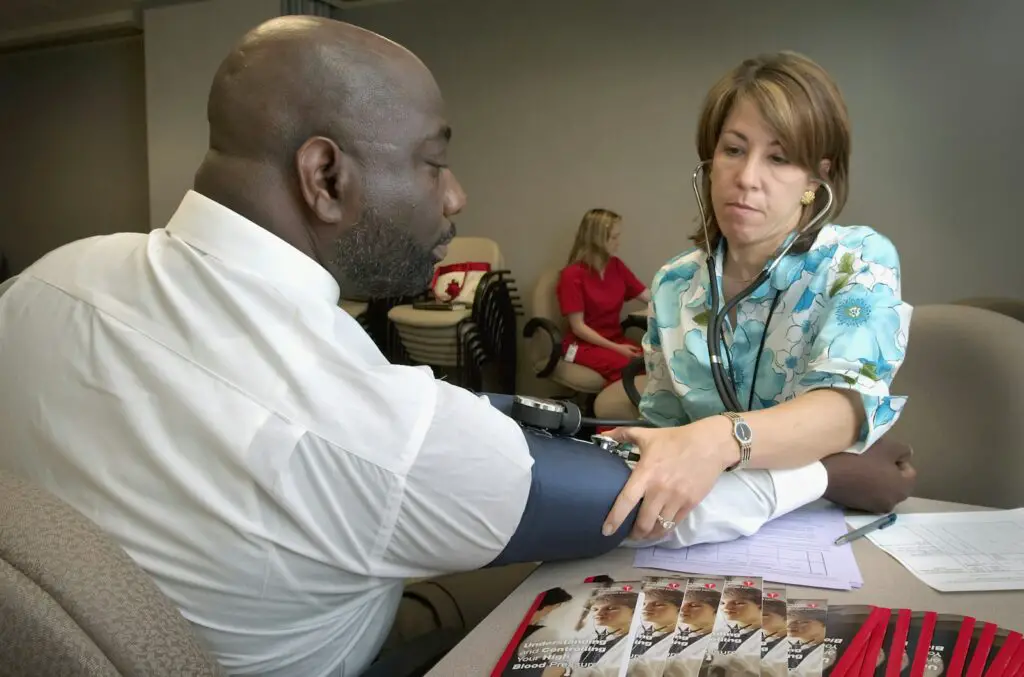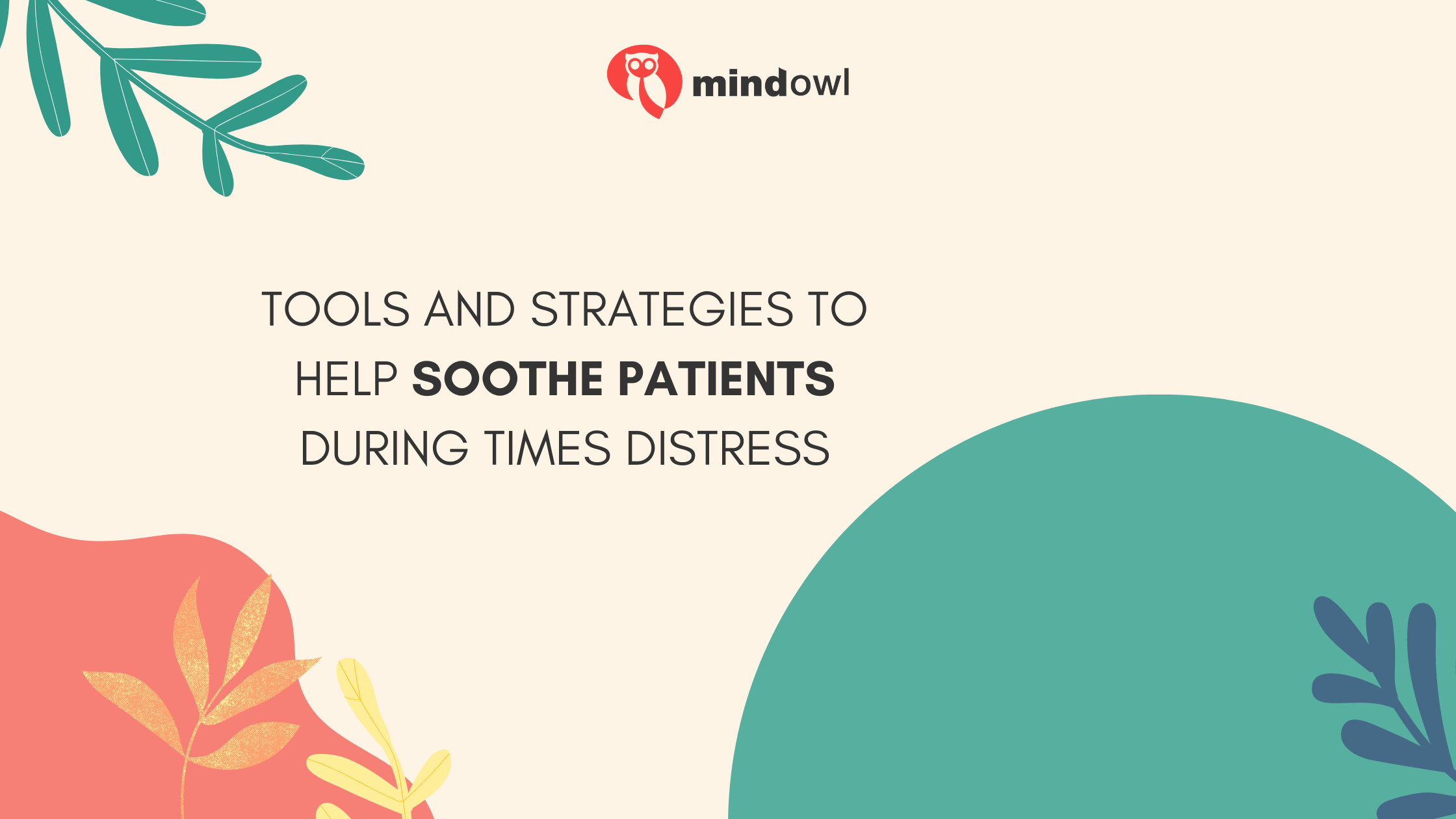Even relatively benign healthcare-related situations can be stressful or even traumatic for the patient at the receiving end of care. Whether facing down a severe diagnosis or just grappling with the fact that they need to lose weight, reduce their cholesterol, or improve their blood pressure, people often leave hospitals having received bad news.
While stress is common in healthcare, it’s also a barrier to recovery and wellness. Healthcare providers can help improve patient outcomes by equipping them with the tools they need to help manage distress. In this article, we take a look at a few tools you can use to help soothe patients during times of distress.
Understanding Patient Distress
It’s important to understand that patient distress is at once multifaceted, and often imperceptible to an outsider. While symptoms can sometimes be visibly obvious (watery eyes, cagey behavior, etc) it’s usually something that happens primarily in the patient’s mind.
Stress. Anxiety. Depression. These feelings are not only hard to deal with, but they can also make it harder for patients to recover. As a healthcare provider, it is important to recognize that many patients will struggle with their diagnosis. Providing emotional support is a great way to address your patient’s complete needs.

The Impact of Distress on Healthcare
Patient distress not only creates stress and anxiety, but it can also result in noncompliance. Patients who are experiencing significant emotional trauma resulting from their care may be less likely to follow the advice given by their healthcare providers. If they become traumatized enough, they may decide to avoid healthcare consultations altogether.
While it is your job to appropriately communicate the stakes and risks of a bad diagnosis, it is equally important to make sure that the patient remains comfortable and confident in their care regimen.
Below, we look at some tools you can use to soothe your patients.
Effective Communication
Healthcare providers often forget that their patients have a much more limited understanding of health-related terms than they do. While doctors and nurses do their best to tell patients everything they think they need to know, information often slips between the cracks.
This is particularly true now that people can see all of the doctors’ and nurses’ comments about their test results on apps like MyChart. For example, if the radiologist comments about a cist on an X-ray and the doctor doesn’t mention it to the patient, they may grow anxious and distrustful of their healthcare collaboration.
It doesn’t matter that the doctor knows the cyst is benign and irrelevant. The patient saw the comment. They want and expect follow-up information.
Take the time to answer questions and clarify points that may feel insignificant to you. It will make a big difference in your patients’ comfort levels, while also helping you establish trust.
Therapeutic Listening
Therapeutic listening is the practice of actively engaging with patients, acknowledging their feelings, and giving them a chance to air out their concerns with the specific purpose of allowing them to vent. Note that these conversations typically do not have a specific productive purpose. The goal is simply to establish trust and ensure that the patient feels heard.
Patient Empowerment
One of the reasons patients feel anxiety during interactions with the healthcare system is that they lack power and autonomy. The doctors and the nurses have all the information and power. The insurance companies have the money and decide what they are willing to spend it on.
The patient, meanwhile, is often sidelined as the two aforementioned parties decide on a mutually agreed-upon solution.
There are limits to how much power the patient can have, but allowing them to fully understand their options and make choices whenever possible can have a big boost on their morale.
Relaxation Techniques
Teaching patients relaxation and mindfulness techniques can help reduce stress and anxiety, while also giving them a valuable tool that could potentially help them contextualize and properly process their overall experiences.
Simple things like meditation exercises, or basic breathing strategies can make a big difference in how your patient reacts to their care.
Multidisciplinary Support
A diversity of care can help to improve patient outcomes, while also making them feel more comfortable with how comprehensive their care is. Naturally, you will ensure that they are connected with any and all necessary doctors and specialists.
However, it may help to also consider connecting some patients with emotional support professionals. Care that addresses the patient’s complete needs (mind, body, and whatever you consider their “spirit” to be) can result in increased optimism.
Distraction
Sometimes a little bit of distraction can go a long way. During long tests, television, music, podcasts, or even just friendly conversation can go a long way toward taking the patient’s mind off what they are going through.
Family
Finally, and most importantly, engaging the patient’s support system is a significant way to boost their spirits and improve their overall outcomes.
The presence of loved ones can provide emotional support, alleviate feelings of isolation, and foster a sense of belonging during challenging times. While you can’t reach out to family members or friends without the patient’s consent, you can heavily emphasize the value of personal relationships during times of sickness or grief. Talk to your patient about ways they can activate their support system to improve their emotional well-being during the treatment process.
Conclusion
Unfortunately, all of the suggestions described above require one thing that most healthcare professionals do not have in abundance. Time.
It’s not always easy to lend a patient an ear or answer questions that you know aren’t really relevant to their treatment. Sometimes, you don’t even have the option to do so. When you are being pressured by administrators to see as many patients per day as possible, there are limits to how much attention you can pay to the emotional aspect of care.
You just have to do what you can. Remember that your patients are more than just their ailments. They are real people, quite possibly going through the most traumatizing experience of their lives. A little bit of extra time and attention can go a long way toward making that experience more comfortable for them.
MindOwl Founder – My own struggles in life have led me to this path of understanding the human condition. I graduated with a bachelor’s degree in philosophy before completing a master’s degree in psychology at Regent’s University London. I then completed a postgraduate diploma in philosophical counselling before being trained in ACT (Acceptance and commitment therapy).
I’ve spent the last eight years studying the encounter of meditative practices with modern psychology.

